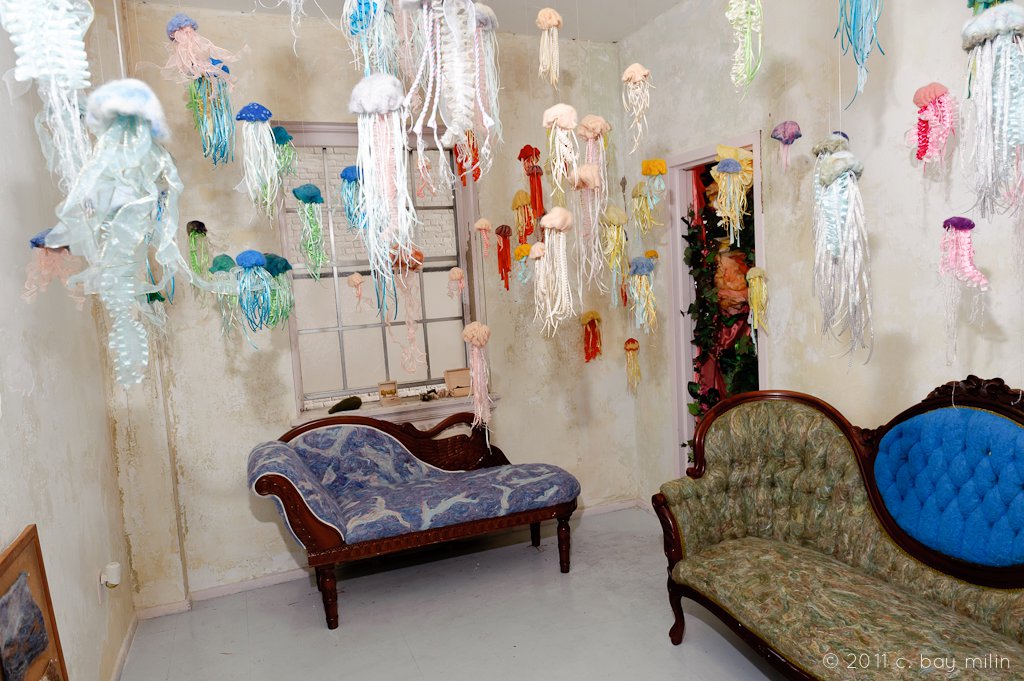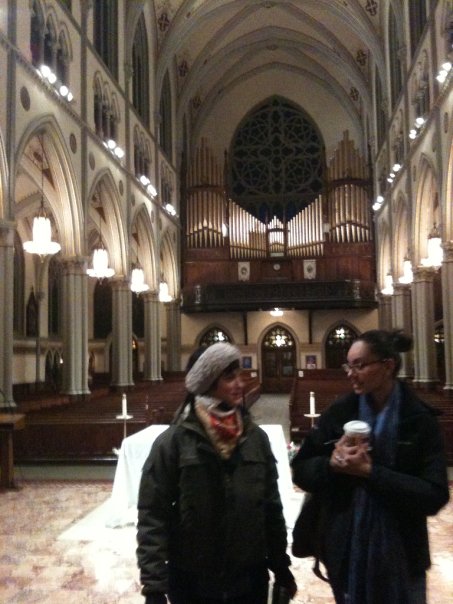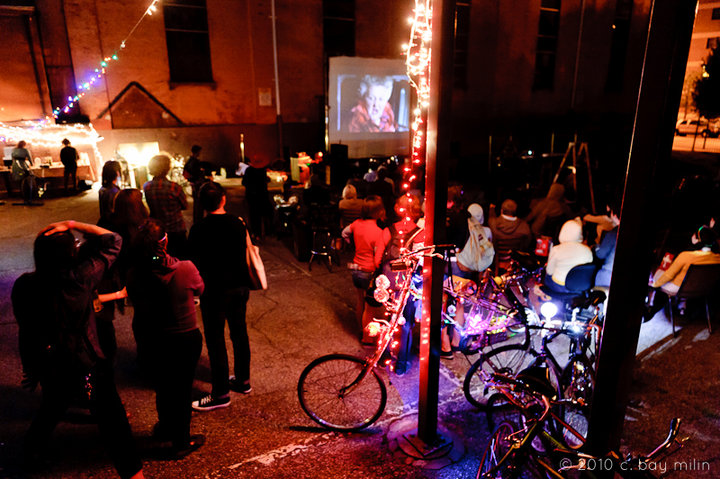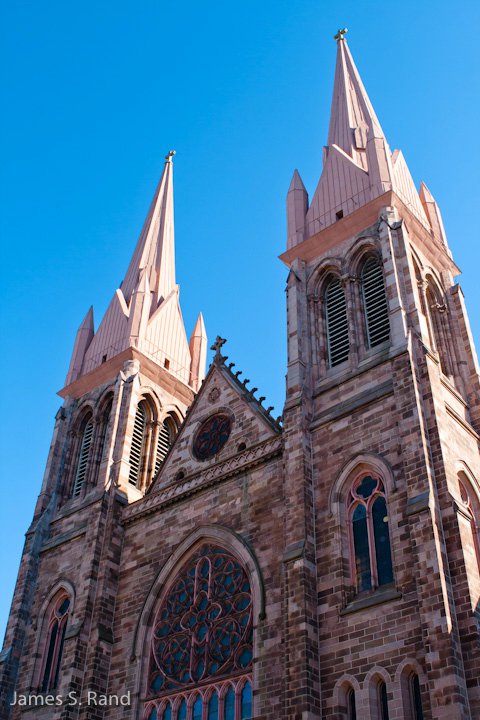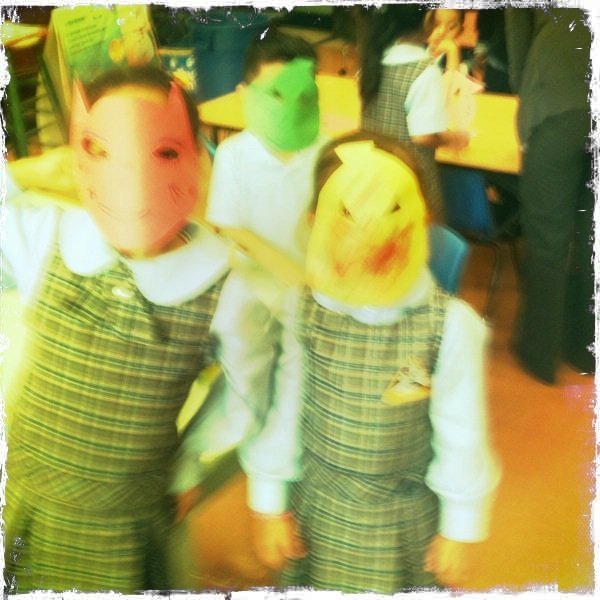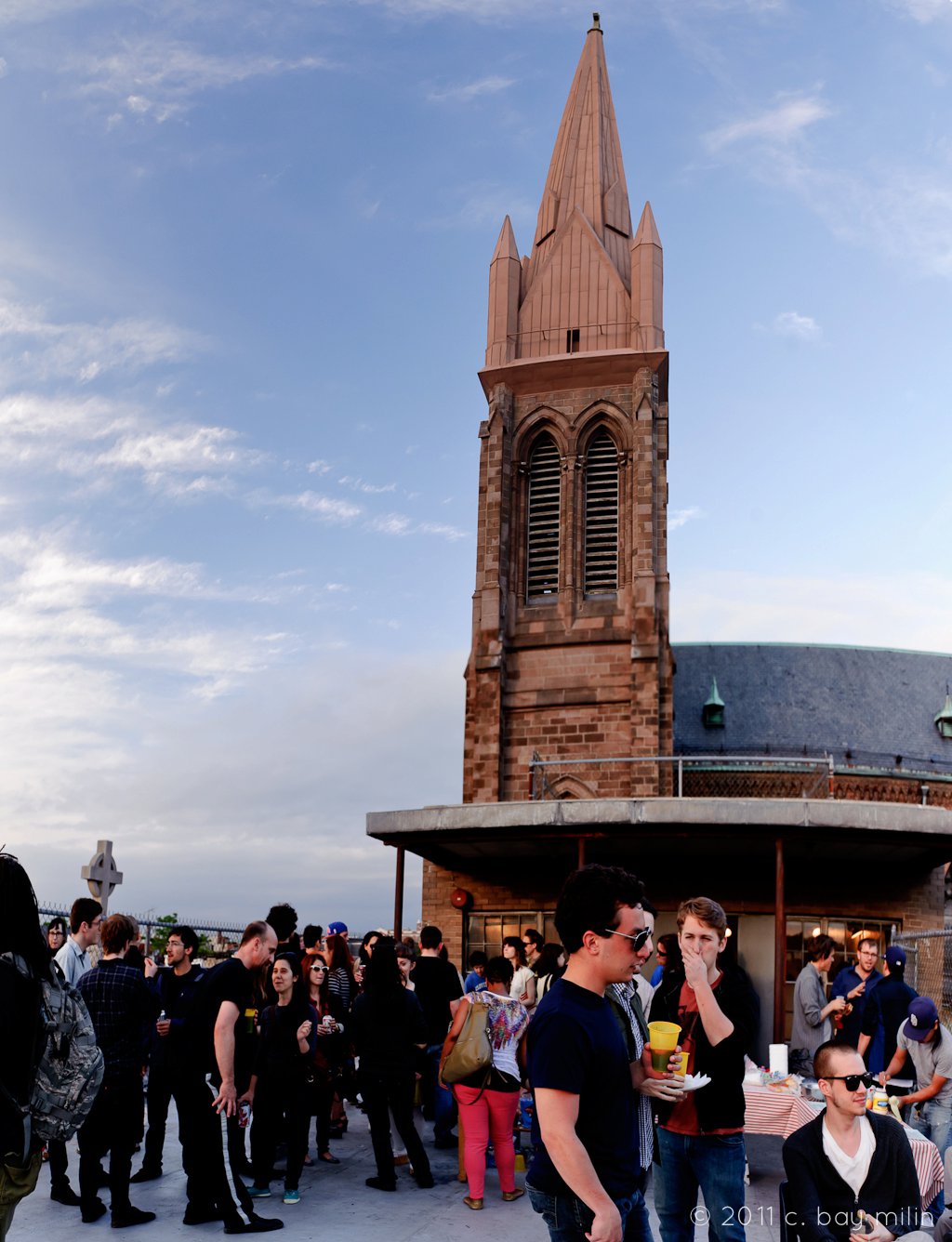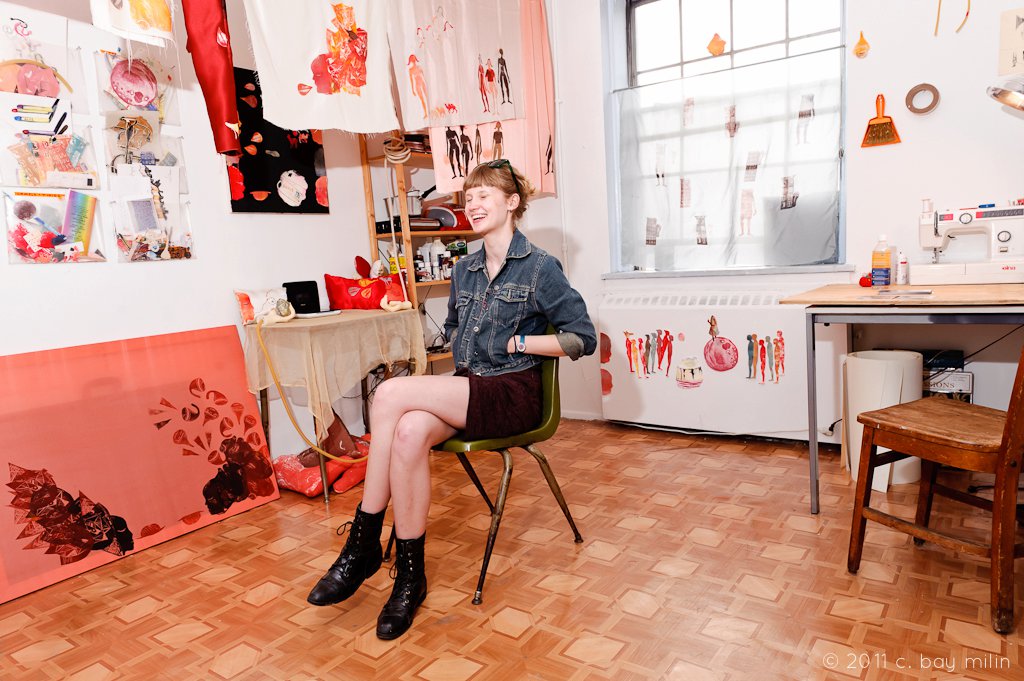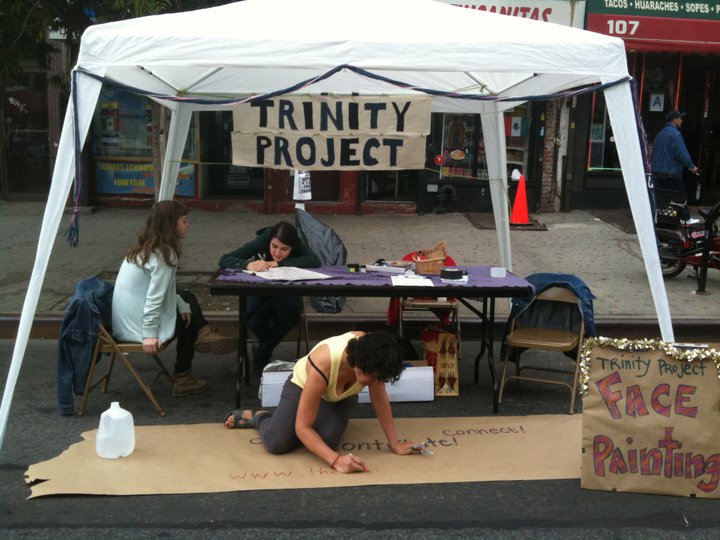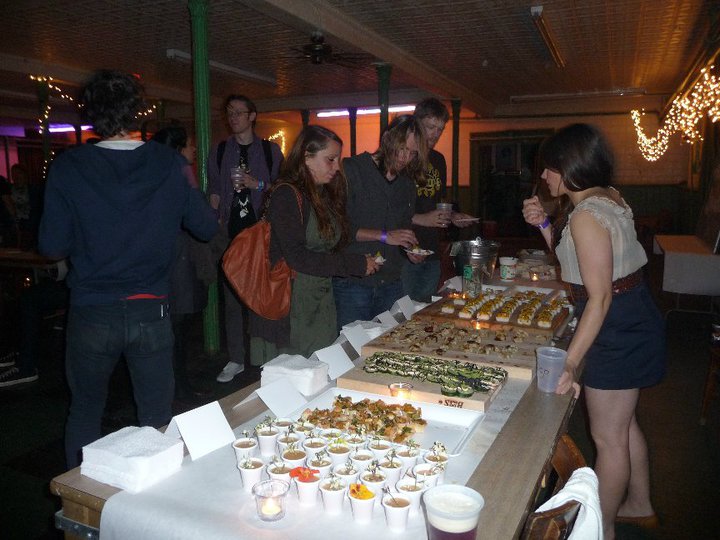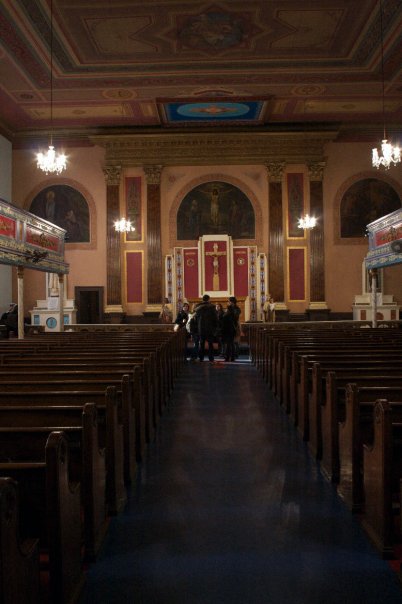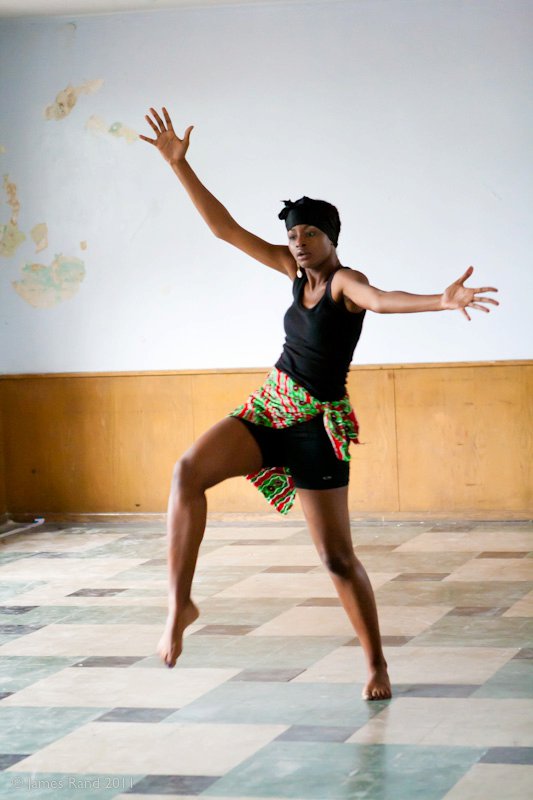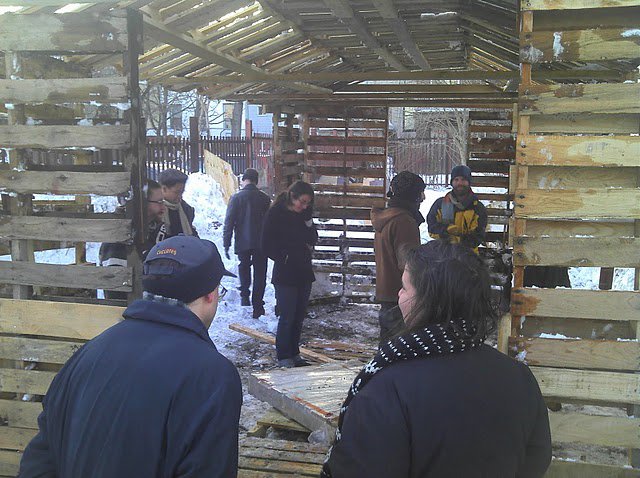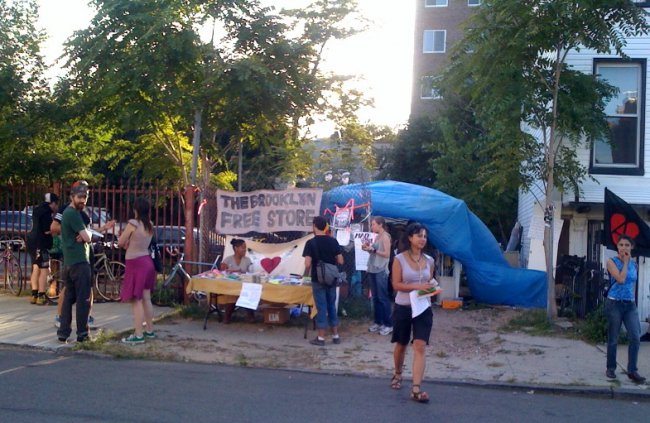trinity project
neighborhood: east williamsburg | space type: nonprofit, art studios | active: 2009–2012 | link: facebook
The Trinity Project is a fantastic, pioneering nonprofit organization working to integrate artists more completely into the communities where they live. It’s an alliance between East Williamsburg artists, the Most Holy Trinity–St. Mary’s Parish, and the Saints Joseph and Dominic Catholic Academy, wherein artists are given subsidized studio and rehearsal space in exchange for community service, whether tending the grounds, staffing church events, or teaching art to the students at the school. It’s a fantastic rebuttal to those who think artists insulate themselves within their neighborhoods, and proof that community alliances are possible across racial, economic, and even religious lines.
To get involved with them (they’re always looking for volunteers), email info@thetrinityprojectbk.org. But first read my interview below with Monica Salazar, who co-founded the project with Megan Tefft.
The lead photo is of Janice Purvis’s studio, taken by c. bay milin. For more from c. bay (who took many of the photos below as well), check out cbaymilin.com.
brooklyn spaces: What gave you the idea for
this project?
Monica: I read an article in the New York Times
about the Church of the
Messiah in Greenpoint, which rents out their basement for events like F.E.A.S.T., and their
choir lofts for band rehearsals. I also knew St. Cecilia’s was doing
something similar. I’m a musician and I have a background in theatre and dance,
and I just thought that was so cool. I’ve lived in this neighborhood for years,
and I’d always walk by this church, although I’d never been inside. So I emailed
the friars and asked if they had any extra space, and they responded immediately
and were really interested. So we decided to come up with a barter program, and
just started filling up the space. We have bands practicing at the empty church,
we have twenty visual artists in this building, we have a rehearsal room for
different dance and theatre groups. We threw a benefit on the roof, we built a
gallery upstairs.
brooklyn spaces: What do the artists do in
return for the space?
Monica: Lots of different projects. A lot
of them maintain the buildings or the grounds, or for example there was a
parishioner centennial birthday at the church and we had some artists do the
decorations and make a video montage. We also found out that the school on the
other side of the church—Pre-K through eight grade, 260 kids—had zero art
education. So about ten of the visual artists have been helping out there, and
that’s where the program is working the best. At this point we’re actually
braided into the curriculum; we aren’t an after-school program, we’re actually
there during the day with the kids. It’s really cool.
brooklyn spaces: How do you decide who’s
going to do what? Do you have artists with teaching backgrounds?
Monica: Some do, some don’t. As we’ve
progressed, we’ve come to realize the type of people we’re looking for, which is
a hybrid of high-caliber art and commitment to community service. This isn’t a
coddling artist’s residency; everybody does all the dirty work.
brooklyn spaces: Tell me about some of the
events you’ve had. You were involved in Bushwick Open Studios, right?
Monica: Yeah, for the last two years, and
we had our own open studios last fall. We’ve done face-painting booths and such
at street fairs. Last summer we had a series of concerts and movies at Saint
Mary’s.
brooklyn spaces: So it’s all been really
successful?
Monica: Definitely. But this is a funny
time. The church is being sold, and we’re going to be out of this building, so
we’re majorly condensing everything we do. We’re going to refocus, distill what
we’ve been doing into what’s working the best, which is working with the kids.
We’re going to reduce it to four visual artists and four theatre, dance, and
performing arts groups.
brooklyn spaces: Was it hard to cut down the
artists?
Monica: Yeah. But we’ve always been very
honest, they always knew it was only a month-to-month arrangement. There’s not
really a precedent for this kind of program; we’re just making it up as we go
along. It’s exciting that we’ve been able to be in this building for fourteen
months; that’s longer than we’d anticipated. And we’ve definitely secured our
relationship with the church, with the school, and with the diocese, and we’re
working on leasing a building of our own.
brooklyn spaces: Do you have a favorite
event that you’ve done?
Monica: Well, one of the challenges of this
project has been that we’re not a religious organization, so the religious
community and the artistic one are not always easy to bring together. But one
really successful event was a holiday concert we had in the sanctuary. It was a
mix of church performers and artists. Friar Timothy sang, one of the other
friars emceed, this awesome church organist played, and the mostly Dominican
church choir performed—they were incredible, they blew us all out of the water.
On our end were mostly experimental bands doing their take on traditional
Christmas music. There was one psychedelic band that was jumping around the
altar, whipping stuff around their heads, and at first I was nervous, but the
friars were into it. It was such a bizarre night, but really wonderful.
brooklyn spaces: Have there been any
problems between the two communities?
Monica: Well, we’ve been extremely emphatic
with our artists about being respectful to the community that’s hosting us. I
know young artists can be over-bold with their strokes, but this is just not the
place for certain kinds of provocative art. I don’t mind it personally—I’m
always intrigued by things that push the envelope, and I think that’s part of
what artists are here for—but if it’s overtly anti-religious or über-sexual,
we’re just not the home for it.
brooklyn spaces: Are there other
neighborhood organizations you work with?
Monica: We work closely with Chez Bushwick and Center for Performance Research. We also have
relationships with the Pratt
Center, Graham Ave
Business Improvement District, El Puente, Saint Nick’s Alliance, and OurGoods.
brooklyn spaces: Had you been looking for an
opportunity to bridge the gap between the artists and the neighborhood
community?
Monica: Yeah. I lived on Broadway and
Graham for six years, and I think it’s always been a little easier for me
because I’m ethnic, but my roommates would complain about feeling uncomfortable,
or that they made other people in the neighborhood uncomfortable. It just seems
so silly to me, but it’s valid, there’s fear on both sides. So this was an
awesome opportunity. I also really love church architecture, even though I’m not
particularly religious. Plus, artists and the church have a very long,
complicated historical relationship, so it wasn’t anything new to combine them.
This church happens to be Franciscan, which is very liberal, philosophical,
super educated. And the friars that we work with are the best. They’re really,
really cool guys.
Like this? Read about more community groups: Trees Not Trash, Bushwick City Farms, Brooklyn Free Store, Body Actualized Center, Time’s Up
